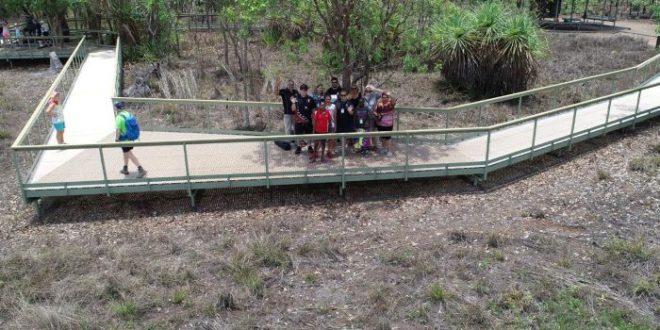Posted
Lianna Brown longs to see the stretch of riverbed where her grandmother was born.
The Kalkarindji woman is a Gurindji interpreter who now lives in Katherine, but she grew up in three different areas near Kalkarindji.
Returning to them has often proved difficult because of the abundance of harsh, remote terrain in the isolated area south-west of Katherine.
“They’re so remote. The landscape is rock country, so you’ve got to walk a long way,” she said.
But drone pilot training has equipped her with skills she hopes to one day use to document and archive culturally significant country.
Pinpointing sacred sites
Organisers of the training, which was part of the 2018 Western and Northern Australian Languages Alliance (WANALA) forum, are excited about the technology’s capacity to map difficult-to-access sacred sites.
“You can GPS items that are sacred that you haven’t been able to do before, because to walk in there, you’ve got to go through massive amounts of bushland,” Papulu Apparr-Kari Aboriginal Corporation chief executive Karan Hayward said.
Ms Brown said, “Because you’re watching it on the iPad, I think it’s a pretty incredible way of recording those countries and sacred areas and having them archived.”
During the training, participants were ferried to nearby wilderness to learn what drones could be used for, when a permit was required, and how to pilot them.
The footage brings new perspectives to the magnetic termite mounds of Litchfield National Park, at times from a height of 30 metres and above.
“You see the beauty of the movement and the panoramas, the height and depth and movement through country,” Robert Patj Patj Mills, who hails from a number of language groups including Kungarakan, traditional owners of the Batchelor area, said.
Photo:
Participants use the vast expanses of Litchfield National Park to learn how to pilot the drones. (Supplied: WANALA)
“Every single one of our students, they all come from a different area and country from Australia, and they all said that our old people had that vision; we had that vision before we even heard about drones.
“So we were fascinated with how did our old people, how did they see what this drone is showing us?”
Saving Indigenous languages
WANALA’s forum brought together representatives of 15 organisations involved in the preservation and transmission of languages.
Ms Hayward told ABC Radio Darwin’s Georgia Hitch the forum was a vital meeting place to discuss the preservation of language.
“The worst scenario is that they will be non-existent,” she said.
“What you’ve got to remember is that language is the key to everything in Indigenous society.
“If there’s no language, there’s no law, there’s no culture, there’s no land.”
Topics:
indigenous-aboriginal-and-torres-strait-islander,
indigenous-culture,
history,
human-interest,
community-and-society,
darwin-0800,
batchelor-0845,
kalkarindji-0852
 Unmanned Aerial Vehicle The latest drone news
Unmanned Aerial Vehicle The latest drone news



